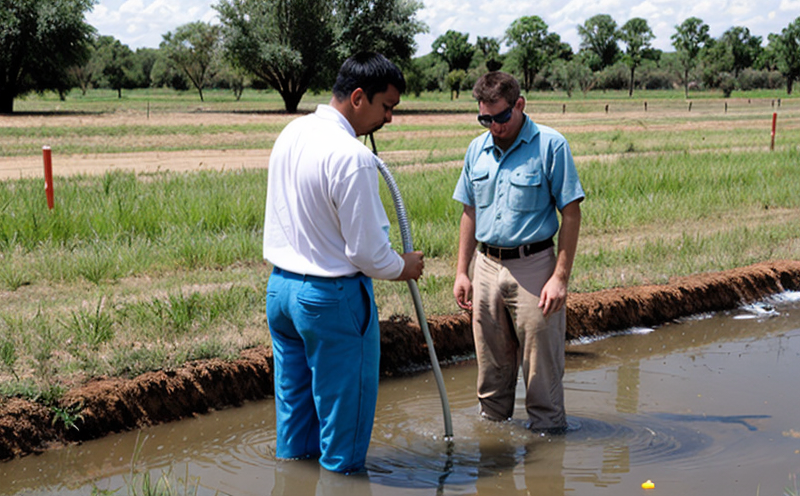ISO 8692 Algal Growth Inhibition Test in Groundwater
The ISO 8692 Algal Growth Inhibition Test is a standardized method used to assess the biocidal efficacy of disinfectants and other antimicrobial agents on algae. This test is particularly crucial for ensuring that water treatment processes, especially those targeting groundwater sources, are effective in preventing algal growth which can lead to poor water quality.
Groundwater plays a vital role in sustaining ecosystems and providing drinking water resources. Algal blooms in these environments not only affect the aesthetic and chemical properties of the water but also pose significant health risks. By employing the ISO 8692 test, laboratories can verify that disinfectants used to treat groundwater are capable of inhibiting algal growth effectively.
The testing process involves inoculating a known quantity of algae into treated and untreated samples of groundwater under controlled conditions. The rate of algal growth is then measured over time using standardized protocols. If the treated sample shows significantly reduced algal growth compared to the control, it indicates that the disinfectant has met the specified efficacy criteria.
This method is applicable across various sectors including environmental protection, water treatment facilities, and public health departments. The test ensures compliance with international standards such as ISO 8692:1987, which specifies the procedure for determining the algal growth inhibition by disinfectants in aqueous systems.
The success of this testing method lies in its ability to simulate real-world conditions closely, thereby providing reliable data on biocidal efficacy. The test is conducted using a specific apparatus designed to maintain consistent temperature and light exposure, which are critical factors influencing algal growth rates.
Benefits
- Ensures compliance with international standards for water treatment processes
- Reduces the risk of algal blooms in groundwater sources
- Promotes the use of effective disinfectants in water treatment facilities
- Supports public health by ensuring safe drinking water quality
- Aids in environmental protection through sustainable water management practices
Quality and Reliability Assurance
The ISO 8692 Algal Growth Inhibition Test is designed to provide accurate and reliable results that can be trusted by regulatory bodies, quality managers, and compliance officers. To ensure the highest level of accuracy, laboratories adhering to this test must follow strict protocols regarding sample preparation, inoculation techniques, incubation conditions, and measurement methods.
Quality assurance in this context includes rigorous calibration of equipment used for temperature control, light exposure, and algal counting. Regular verification of these instruments ensures that the data generated is consistent with international standards. Additionally, laboratories must maintain detailed records of all test procedures to facilitate reproducibility and traceability.
The reliability of the results also depends on standardized reagents and media used throughout the testing process. These materials are selected based on their ability to support algal growth under controlled conditions while being unaffected by external variables such as pH shifts or nutrient variations.
Use Cases and Application Examples
| Application Scenario | Description |
|---|---|
| Treatment Facility Optimization | Determine the effectiveness of new disinfectants in reducing algal growth, thereby optimizing treatment protocols. |
| New Product Development | Assess biocidal efficacy on newly developed antimicrobial agents for use in water treatment processes. |
| Regulatory Compliance Verification | Ensure adherence to international standards and local regulations regarding water quality and safety. |
| Sustainable Water Management | Implement measures aimed at preventing algal blooms in groundwater sources, thus maintaining ecological balance. |
The ISO 8692 Algal Growth Inhibition Test is indispensable for these applications as it provides objective evidence of biocidal efficacy. This information is crucial for making informed decisions about the selection and implementation of appropriate disinfection methods in various water treatment settings.





